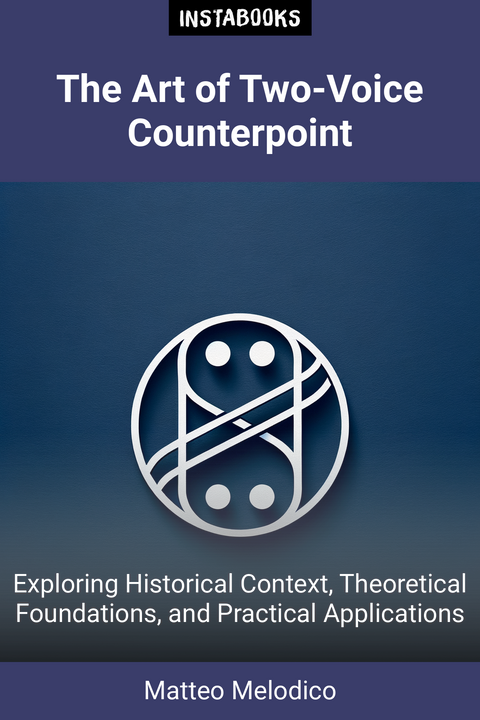
The Art of Two-Voice Counterpoint
Exploring Historical Context, Theoretical Foundations, and Practical Applications
Included:
✓ 200+ Page AI-Generated Book
✓ ePub eBook File — read on Kindle & Apple Books
✓ PDF Print File (Easy Printing)
✓ Word DOCX File (Easy Editing)
✓ Hi-Res Print-Ready Book Cover (No Logo Watermark)
✓ Full Commercial Use Rights — keep 100% of royalties
✓ Publish under your own Author Name
✓ Sell on Amazon KDP, IngramSpark, Lulu, Blurb & Gumroad to millions of readers worldwide
Introduction to Two-Voice Counterpoint
Dive into the intricate world of two-voice counterpoint, or "contrappunto a due voci," a musical technique that beautifully weaves together two independent melodies to form a harmonious composition. This book unravels the historical roots of this art form, tracing its evolution from the medieval period through to the Renaissance.
Historical Context and Evolution
From the early days of medieval organum to the sophisticated compositions of the Renaissance, two-voice counterpoint has evolved significantly. We'll explore how theorists like Lodovico Cerreto and Gioseffo Zarlino established foundational rules and principles that still resonate today. You'll discover how these theorists captured the essence of counterpoint in works such as Cerreto's "El melopeo y maestro" and Zarlino's "Le istituzioni armoniche." This historical perspective will provide essential context for understanding the significance of improvisation and the evolving practices of counterpoint.
Theoretical Insights and Key Principles
The heart of this book is dedicated to the rules and principles laid out by theorists. You'll learn about the importance of consonant intervals and the dangers of dissonance, as well as how these concepts maintain the independence of each voice. Through an in-depth analysis, we emphasize the necessary balance between structure and creativity in two-voice counterpoint.
The Role of Improvisation
Pietro Pontio’s insights into improvisation highlight its central role in the creative process of counterpoint. Discover how improvisational techniques allowed composers to explore new melodic avenues, creating spontaneous and expressive music. This exploration underscores the significance of improvisation in the development of complex musical forms, such as the fuga.
Compositional Examples and Practical Applications
This book showcases exemplary works from composers like Johann Sebastian Bach, Palestrina, and Monteverdi. You’ll engage with a range of musical forms, including masses, motets, and madrigals, each revealing the practical applications and aesthetic beauty of two-voice counterpoint. Each chapter includes analyses of these compositions, illustrating how these techniques were implemented to create masterpieces of Western classical music.
Conclusion
By the end of this journey, you will not only have a comprehensive understanding of two-voice counterpoint and its historical, theoretical, and practical significance but also the skills to apply these principles in your own musical endeavors. Join us for this exploration of harmony, creativity, and the timeless art of counterpoint.
Table of Contents
1. The Origins of Counterpoint- Early Historical Developments
- Role of Gregorian Chant
- Introduction to Organum
2. The Renaissance Shift
- Key Theorists and Their Contributions
- Codification of Counterpoint Rules
- Renaissance Music Characteristics
3. Understanding Counterpoint Rules
- Intervals and Consonance
- Dissonances and Resolutions
- Voice Independence Principles
4. Improvisation in Counterpoint
- The Perspective of Pietro Pontio
- Improvisation Techniques
- The Impact of Improvisation on Composition
5. Counterpoint in Practice
- Composing for Masses
- Motets: Short Choral Gems
- Madrigals: Secular Expression
6. Johann Sebastian Bach's Mastery
- The Art of Fugue Analysis
- Well-Tempered Clavier Breakdown
- The Genius of Contrapuntal Composition
7. Lodovico Cerreto and His Treatise
- Essence of El melopeo y maestro
- Cerreto's Influence on Counterpoint Theory
- Practical Applications from Cerreto's Work
8. Gioseffo Zarlino's Innovations
- Principles from Le istituzioni armoniche
- Zarlino's Approach to Counterpoint
- Legacy of Zarlino in Music
9. Counterpoint Techniques in Different Genres
- Comparative Analysis of Musical Forms
- Case Studies: Mendelssohn and Others
- Improvisational Elements in Various Genres
10. Exploring Contemporary Counterpoint
- The Evolution of Two-Voice Counterpoint
- Influence of Digital Composition Techniques
- Modern Applications and Adaptations
11. Final Thoughts on Two-Voice Counterpoint
- Summarizing the Journey
- Future Directions for Study
- Call to Experiment and Create
12. Review of Key Composers and Works
- Influential Figures in Counterpoint
- Analyzing Key Compositions
- Impact on Modern Music
Target Audience
This book is written for musicians, music students, and enthusiasts interested in understanding two-voice counterpoint and its application in various musical forms.
Key Takeaways
- Comprehensive understanding of two-voice counterpoint and its evolution.
- Insights into the theoretical foundations as laid out by key scholars.
- Practical knowledge for composing in various musical genres utilizing counterpoint.
- Historical context and significance of improvisation in counterpoint.
- Analytical skills to dissect compositions by renowned composers like Bach.
